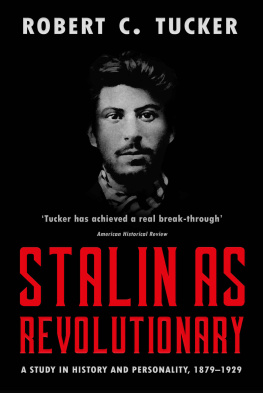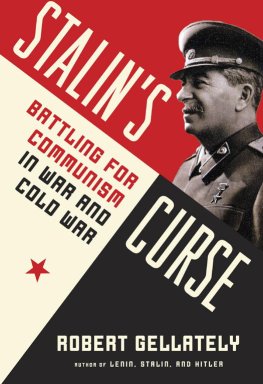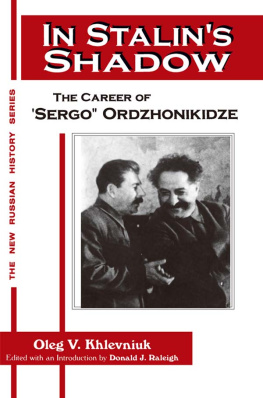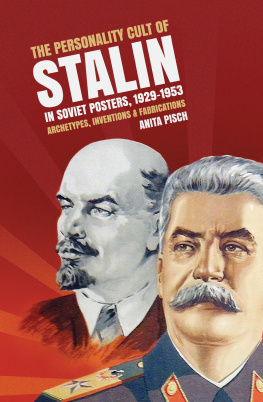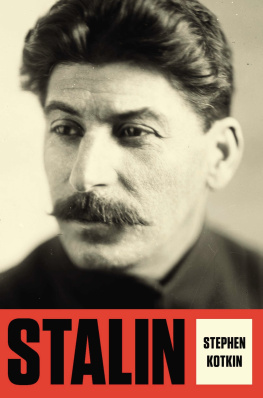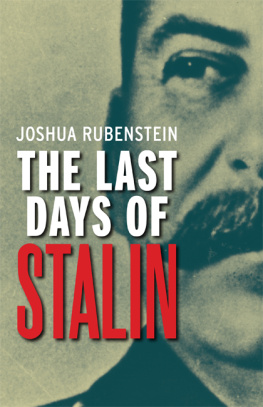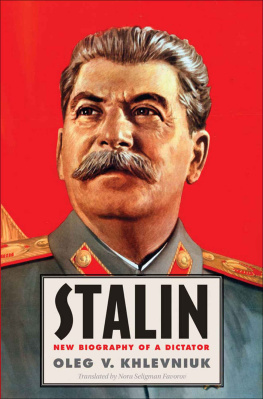STALIN AS REVOLUTIONARY
Robert C. Tucker
Robert C. Tucker 1973
Robert C. Tucker has asserted his rights under the Copyright, Design and Patents Act, 1988, to be identified as the author of this work.
First published in 1974 by W. W. Norton & Company, Inc.
This edition published in 2018 by Lume Books.
T o E vgenia
Table of Contents
Preface
The biographical literature on Stalin has its conventions. The writer typically begins by identifying Transcaucasia, the region lying between the Black and Caspian seas south of the Caucasian mountain range, as an historical mingling-ground of Asian and European peoples. He gives a sketch of the small Transcaucasian country of Georgia, and of the Georgian town of Gori where a boy was born in 1879, Iosif Djugashvili by name, who would later become known to the world as Stalin. Then the story flows on in chronological fashion.
This book, though biographical, follows a somewhat different plan deriving from its particular theme: the rendezvous of a personality with the public political world. My aim is less to tell the story of a life than to illuminate its linkage with history. This being the life of one who in later years made himself the most absolute ruler yet seen in any large contemporary state, the book could also be described as a study in the forming of a dictator and the conditions that made for his dictatorship.
A flood of Russian revelations since Stalins death in 1953 has removed any possible doubt that his name is going down in history as a byword for tyranny. They make it incontrovertibly clear that he was a man of dictatorial personality. As usual, however, and tragically, much that is evident to hindsight eluded foresight. In the party oligarchy that ruled Russia in the early Soviet years, Stalin does not seem to have been perceived by many as a potential dictator. The ruling group included a forceful though non-tyrannical leader in Lenin, who was surrounded by a galaxy of renowned revolutionary figures of lesser stature: Lev Trotsky, Grigori Zinoviev, Lev Kamenev, Nikolai Bukharin, Karl Radek, and others. Stalin, by contrast, was not yet well known outside higher party circles, and many within them viewed him as a second-rater, hence not someone to be feared. He had risen in the pre-revolutionary Bolshevik movement as a party organizer, one of its committeemen working underground in Russia. In November 1917, when the party took power, he became a figure of consequence, though not yet a leader of highest rank, in Lenins revolutionary Republic of Soviets. Five years later, however, he was a leader of highest rank. In addition to belonging to the key policy-making bodies, he had achieved a position of pivotal organizational power as general secretary of the partys Central Committee. Still, in upper Bolshevik circles the condescending view of him persisted.
This helps to explain why the leadership failed to act on a warning that came from Lenin. By late 1922, Lenin was seriously ill and concerned about the partys future. He had also become convinced by this time that certain character traits of Stalinsnotably his rudeness and his tendency to be guided by malice in politicsmade it dangerous for him to be entrusted any longer with the powerful post of general secretary; and in a letter to the coming party congress (a document that later became known as his testament) he recommended that Stalin be replaced in that post by someone more tolerant, more loyal, more polite and more considerate of comrades, less capricious, etc. The matter of personality might seem a trifle, he added, but it was one of those trifles that could take on decisive significance. After Lenin died in January 1924, his widow communicated the document to the higher party leaders. They, however, chose to disregard Lenins recommendation about Stalin. Most of them eventually paid for this decision with their lives.
For an account of the course that history subsequently took, we may turn to Nikita S. Khrushchev, the man who succeeded Stalin as leader of the Soviet Communist party. Addressing a closed session of the partys Twentieth Congress in February 1956, Khrushchev read aloud the part of Lenins testament that dealt with Stalin, and said: As later events have proven, Lenins anxiety was justified. Then he reconstructed these later events. The burden of his story was that Stalin, having won the role of supreme leader of the party during the nineteen-twenties, proceeded in the thirties to transform the oligarchical single-party system into a true autocracy in which the ruling party itself was subjugated to his personally controlled secret police. He masterminded during those years of party purges a veritable Soviet holocaust. Not only those who had earlier opposed him but many thousands of others were shot or sent to camps as enemies of the people. Through wholesale purge and terror Stalin created a regime of personal dictatorship in which one man made all the important decisions and his colleagues were forced to be submissive yes-men. He also employed his autocratic power to promote his self-glorificationfor example, by secretly editing the draft of his own official biography in such a way as to accentuate the theme of his greatness.
Drawing upon his own experience as one of the dictators lieutenants from the early thirties to the end, Khrushchev presented in the secret speech to the Twentieth Congresswhich did not remain secret for longa characterization of Stalin the man. He spoke of his intolerance of criticism and of dissenting views, his willingness to inflict suffering or death upon any person whom he came to regard as an enemy, his intense distrust and suspiciousness, his sense of being surrounded by conspiracies, and his thirst for praise and glory. He underlined the progressive character of Stalins negative characteristics, observing that they developed steadily and during the last years acquired an absolutely insufferable character. In sum, he painted a classic portrait of a tyranta portrait, moreover, which has since been redrawn with much added detail by a heterogeneous collection of persons who could likewise, in many instances, speak from firsthand experience: other party leaders important enough to have had direct contact with Stalin; generals who served under him during the Second World War; Soviet journalists and writers; Old Bolsheviks who survived the camps to write their memoirs; a prominent Yugoslav, Milovan Djilas, who dealt with Stalin in the forties; the dictators daughter, Svetlana, whose corroborative testimony is all the more significant for the fact that she writes from the unique vantage-point of a witness within the family; and a dissident former Soviet party member, Roy Medvedev, who has woven new biographical data into a work on Stalins career in power.
Scholarship, however, has yet to make full use of the material now available in such abundance. It has scarcely more than begun to formulate the requisite analysis of Stalins character and the psychological motivations that drove him to seek unlimited autocratic power through purge and terror. Still less has it penetrated the intricate interplay between these psychological motivations and his political goals and ideas. Nor, although much pertinent evidence has long been on the record, has adequate attention been given to the formation of Stalins political personality in early life. What made him a Marxist, why he dropped out of a theological seminary at the age of twenty to pursue revolution as a career, why he became a Bolshevik follower of Lenin when most Georgian Marxists were choosing Menshevism, and what his personal goals in the revolutionary movement wereall these remain open questions. It is essential to answer them if we are to arrive at a deeper understanding of his actions in later life.
Such leaders of psychological thought in this century as Karen Horney and Erik Erikson (not to mention their predecessor Sigmund Freud) have taught us keener appreciation of the developmental nature of personality. Character and motivation are not static qualities; they undergo growth and change in lives normally marked by crucial junctures and times of future-determining decision. Moreover, the selfhood or (in Eriksons phrase) psychosocial identity formed in youth has a prospective or programmatic dimension. It comprises not simply an individuals sense of who and what he is, but also his goalshis clear or inchoate beliefs about what he can, should, and will achieve. Hence later biographical vicissitudes cannot but impinge upon personality profoundly. Fulfillment or non-fulfillment of the inner life-scenario necessarily affects the individuals relationship to himself, and this is something that lies at the core of personality. It is likewise bound to affect his relations with other persons significant to him and thereby, perhaps, his and their lives as a whole. All this is as true of persons who become dictators as of others. In studying such a life, therefore, one should inquire into the structure of aspiration in the formative years, and seek to uncover the view in retrospect, the individuals attitude in middle years towards his intervening life-history.
Next page
